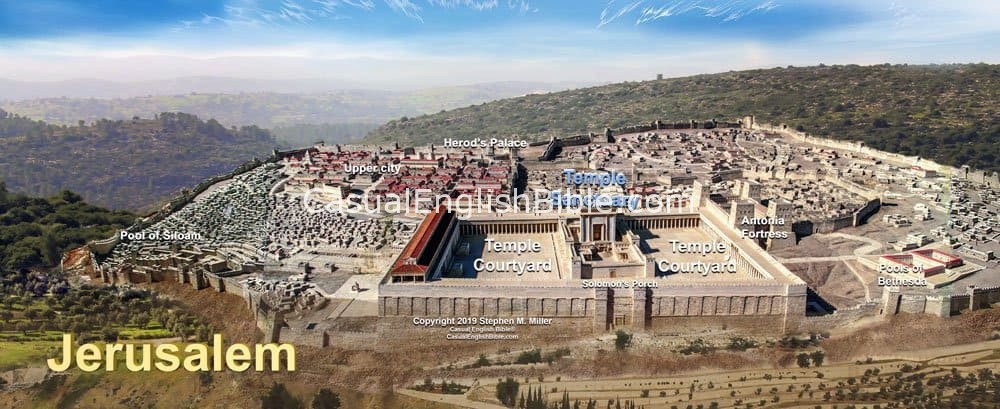
Jerusalem
Model of Jerusalem
Model of Jerusalem in the time of Jesus Christ, with the Temple, Fortress of Antonia, Sheep Gate, Pools of Bethesda, Pool of Siloam.Temple
The Jewish Temple in Jerusalem during the time of Jesus was built by King Herod, beginning between 20-18 BCE. The Temple was a major cultural, religious, and political center of the Jewish people. It was located on the Temple Mount, a large platform of stone that covered an area of about 36 acres.
The Temple was made up of various components. This included the Courtyard of the Gentiles, the Women's Courtyard, the Court of Israel, and the Holy of Holies, which housed the Ark of the Covenant. The Ark had been lost to invaders by the time of Jesus. The Temple was also the location for sacrifices and offerings to God.
During Jesus' time, the Temple was a bustling religious center, and Jews and pilgrims from all over the world traveled to Jerusalem to worship there. The Temple was where Jesus overturned the tables of the money-changers and the dove-sellers. It was also where he encountered the teachers of the law and had several notable debates with them.
Sacred city
Jerusalem itself was a city of great significance and sacredness to the Jewish people. The city was first established as the capital of Israel by King David and was the site of the First Temple, which was destroyed by the Babylonians in 587 BCE. After the Jews returned from Babylonian exile, they rebuilt the Temple and the city.
During Jesus' time, Jerusalem was under Roman rule and was a bustling cosmopolitan city. It was home to several parties and sects, including the Pharisees, Sadducees, Essenes, and Zealots. The city was also an important trading hub, with traders and merchants coming from all over the Roman Empire to do business there.
Tense town
Despite its importance and significance, Jerusalem was also a city that experienced conflict and tension during the time of Jesus. The Jewish people longed for independence and freedom from Roman rule, and there were several revolts that took place both during and after Jesus' lifetime.
So, the Jewish Temple and Jerusalem in the time of Jesus were central to Jewish culture, religion, and politics. The Temple was a significant religious center, and Jerusalem was a bustling city that was at the heart of many historical events. Together, these two places provide important context and insights into the life and teachings of Jesus.

